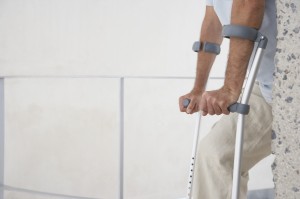What is an implantable loop recorder?
A loop recorder is very small leadless device, that is implanted under the skin on the chest wall. Due to tremendous advances in technology the Reveal Linq devices are now much more compact. They can be inserted under local anaesthetic making a very small incision before injecting the device under the skin. Often the procedure takes around 15 minutes. The Reveal device is able to monitor the heart rhythm for longer periods of time than external cardiac monitors, such as a holter monitor or event recorder. As the loop recorder is albeit minimally invasive, it is often reserved for cases where symptoms are concerning, such as recurrent loss of consciousness, or when other tests have been unable to document a cause. It is common for patients to have had a cardiac monitor or event recorder before a loop recorder is considered. Once implanted, the loop recorder can be interrogated by passing a small detector over the skin that communicates remotely with the device and downloads information. The device is much smaller than a pacemaker.
Cardiac cause of loss of consciousness?
There are a number of reasons why a person may experience loss of consciousness. These may be secondary to epilepsy with seizures, a drop in blood pressure as occurs in fainting, low blood sugars or related to posture as in postural hypotension. A common cause is also a change in heart rhythm, which may be either very fast or very slow. The loop recorder is able to distinguish whether a collapse is related to a change in the heart rhythm following an episode of collapse. One possibility is that the device documents an abnormal heart rhythm, however if a person collapses and no abnormal heart tracings are recorded, then by deduction the cause must be related to something else.
Alternative uses for a Reveal Device
To detect intermittent arrhythmias that if documented would change management such as atrial fibrillation that if undetected and untreated can increase risk of recurrent stroke. A Reveal device can help aqcuire information necessary to commence anticoagulation.
To detect arrhythmias in people with higher risk conditions that pre-dispose them to future arrhythmias such as some types of cardiomyopathy and channelopathy. This may assist with earlier consideration of medical and device therapies.
To clarify the cause of loss of consciousness, dizziness and sometimes seizures when a diagnosis of epilepsy is felt less likely.
Useful external links
National Institute for Health and Care Excellence: Reveal LINQ Insertable cardiac Monitor to detect Atrial Fibrillation after cryptogenic stroke
https://www.nice.org.uk/advice/mib141/chapter/Summary
European Society of Cardiology: Implantable Loop Recorders in Clinical Practice
British Heart Foundation: Implantable Loop Recorders
https://www.bhf.org.uk/heart-health/tests/implantable-loop-recorders

